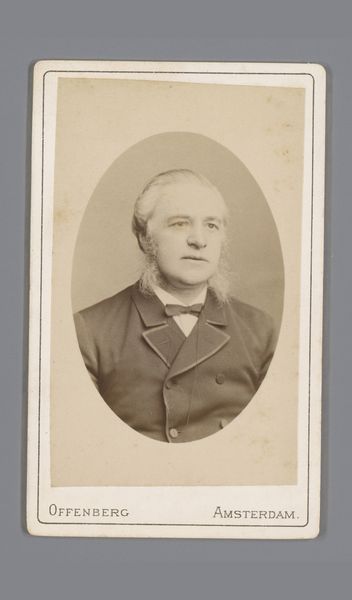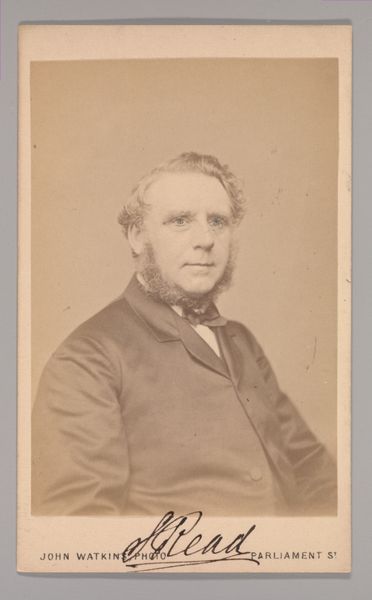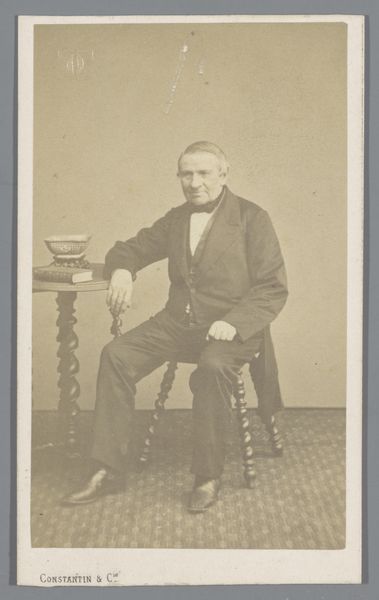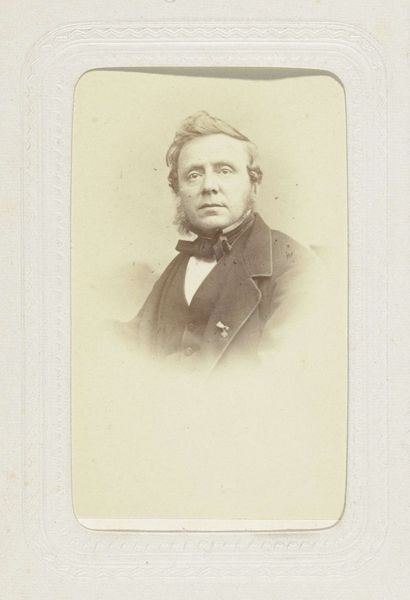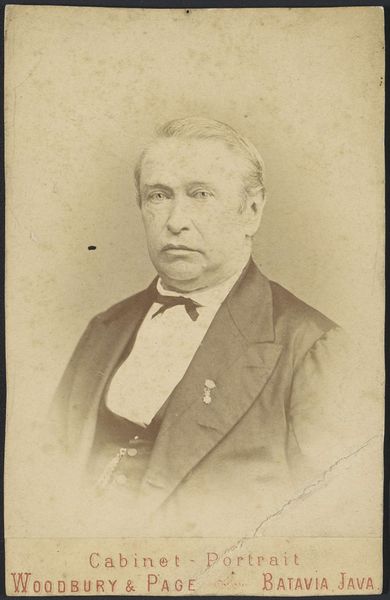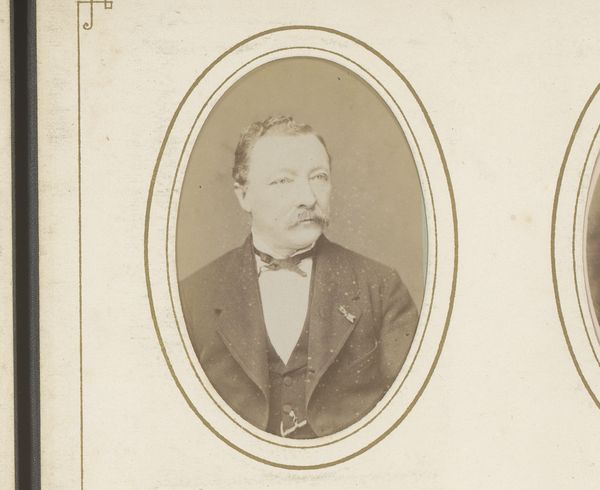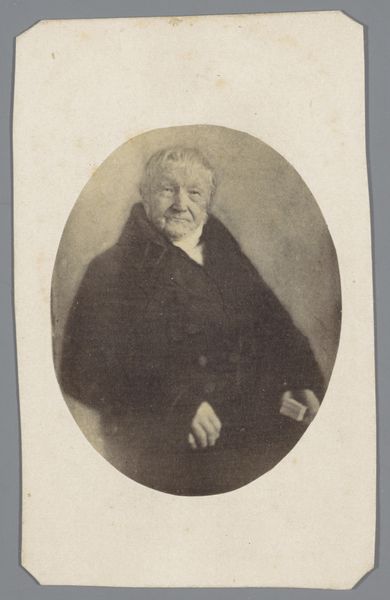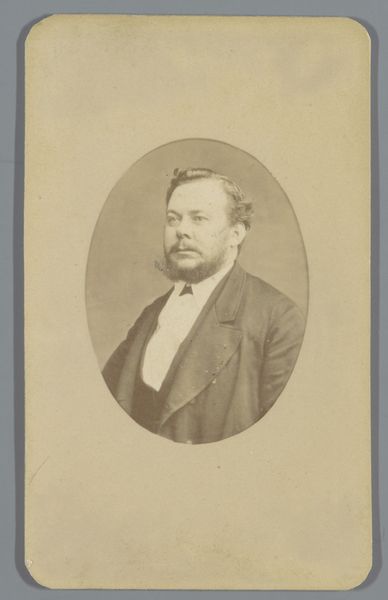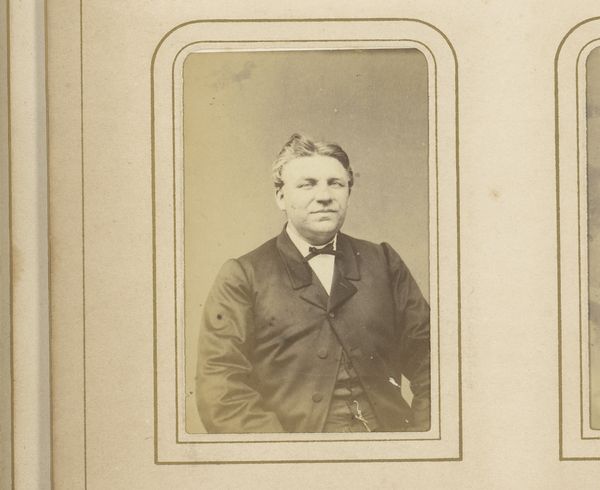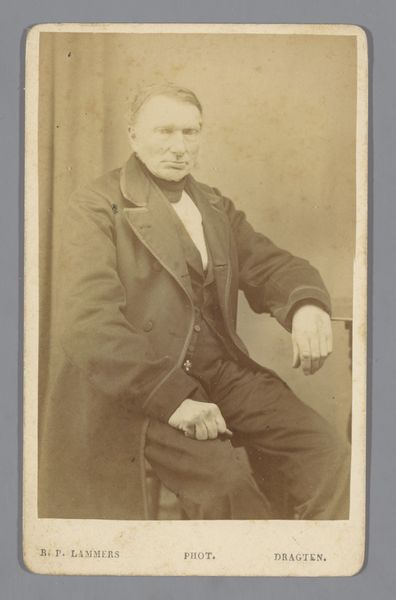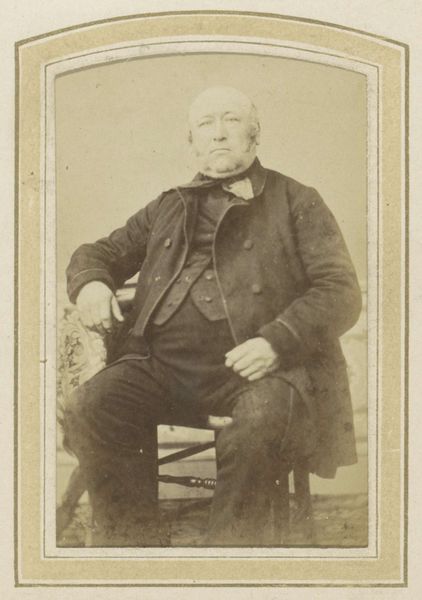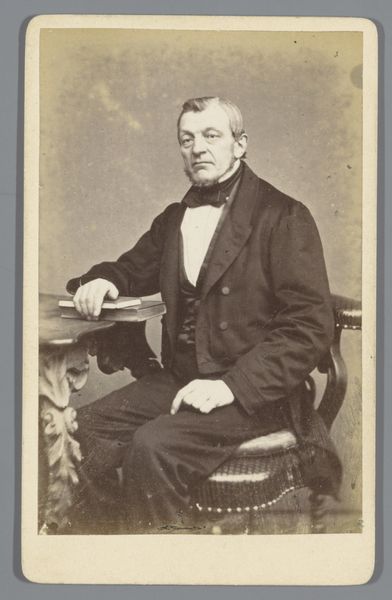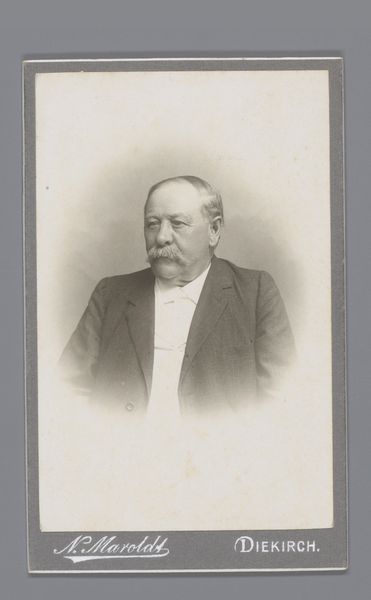
photography, gelatin-silver-print
#
portrait
#
photography
#
historical fashion
#
framed image
#
gelatin-silver-print
#
19th century
Dimensions: height 100 mm, width 63 mm
Copyright: Rijks Museum: Open Domain
Curator: Henri Ostis's "Portret van een onbekende oudere man," made sometime between 1870 and 1880, captures a certain dignified air using gelatin silver print. What's your immediate impression? Editor: Stark! The composition centers so heavily on the man's face; the limited palette and the somewhat softened focus only enhance the presence. It's incredibly direct. Curator: This portrait offers an interesting glimpse into the accessibility of photographic portraiture at the time. Gelatin silver prints allowed for mass production and a more democratized form of representation than painting offered. Editor: Indeed, and the way the light catches the texture of his beard and hair is meticulously rendered. Look closely, and you can see a sort of semiotic coding in the framing. That subdued, rectangular field serves to draw one’s eyes inside a tightly structured composition, right to his countenance. Curator: Let's consider the labor involved: the photographer's skill in handling the equipment, the sitter’s time and financial investment. Photographic studios provided a space where social identities were constructed and performed for the camera. What story can you imagine being made for sale, framed for viewing, or distributed among acquaintances? Editor: Perhaps the most striking feature, other than his formal garb and its subdued hues, is the balance of light and shadow that sculpts his face. This element infuses the picture with its pensive, composed affect. The artist has leveraged limited chromatic information to describe his human subject vividly and create such psychological complexity. Curator: The framed image format also speaks volumes about the commodification of portraiture and how these objects were circulated and consumed within society. They were affordable keepsakes and statements of social status available to a burgeoning middle class. Editor: Absolutely. Observing the formal attributes here yields powerful interpretative levers; by studying compositional balance and tone we begin unlocking the image’s deeper strata of expression. Curator: Right. And thinking about material production, the darkroom processes, allows us to understand the broad distribution. The photo provided new forms of memory, shaped how identity was recorded and shared widely during this era of increasing industrial production. Editor: Thinking this through now, I am impressed by the controlled contrasts as well as compositional decisions made visible to my scrutiny! Curator: And for me, it provides a tangible link to the individuals, production networks, and patterns of consumption defining photographic art’s place within broader economic frameworks of the 19th Century.
Comments
No comments
Be the first to comment and join the conversation on the ultimate creative platform.
